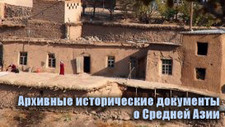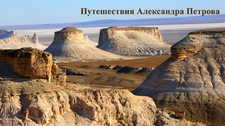You are here
Russian Gagenbeck.
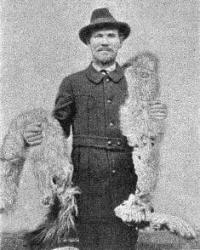
Osip Yemelyanovich Nezhivov.
"At his home in Naryn, Nezhivov set up a kind of museum, where he collected almost all the representatives of the local fauna - in the form of stuffed animals, skeletons, preserved preparations, etc. All those interested are freely admitted to this museum, and the owner himself willingly gives the necessary explanations ..."
Osip Nezhivov in Naryn fortification.
The boundless area stretching between Lake Balkhash and the Tien Shan Mountains, in its northern part is a vast steppe, through which flows the wide Ili River with its seven branches, which gave the entire colossal region the name Semirechye.
The Karatau ridge stretches to Lake Balkhash, and to the south of the Ili River valley there are four smaller chains of the Alatau Mountains, surrounding the giant Lake Issyk-Kul; along the southern shore of this lake rises the Terskey-Alatau mountain range, and even further south from it, on the small but wild Naryn River, is the Naryn fortification.
A very modest settlement in the middle of a colossal desert. The area is wonderful, magical, colorful, with sharp breaks in the mountain contours, with clear mirrors of huge pools of water, with black-green velvet of forest thickets of fir trees, with emerald-purple, bumpy plains of the steppes.
And a lot of light, and even more colors, and a continuous change of aromas, sometimes warm and thick, caressing and pleasantly intoxicating, sometimes cool and subtle, invigorating and refreshing. Almost thirty years ago, a certain Perm peasant named Osip Nezhivov was thrown into this Naryn fortification by conscription.
Despite the fact that the area of his homeland also cannot be called not picturesque, Nezhivov, having arrived in Semirechye, was positively stunned by the overwhelming beauty of the local nature, but he was especially amazed and occupied by the countless diversity of the local fauna.
A passionate hunter, a wonderful marksman, a born naturalist (When Nezhivov was barely 15 years old, Count S. A. Stroganov passed through his native village on one of his excursions; he noticed this village boy, who showed a heightened interest in the Count's collection of insects and willingly helped him with this. 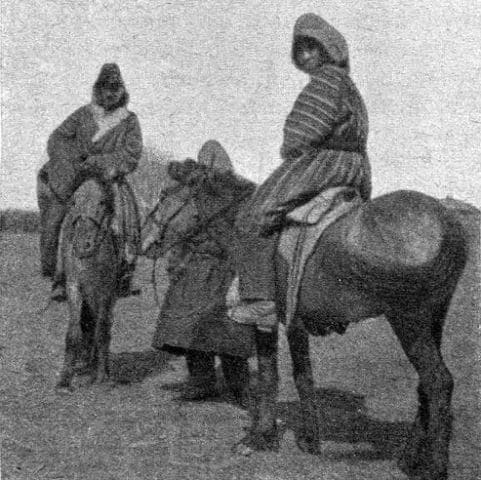
The Count persuaded Nezhivov's father to let the boy go with him on a long excursion, and he gave his consent. During the entire journey, the boy was the Count's closest assistant in collecting and dissecting entomological collections and in stuffing birds), Osip Nezhivov spent all his leisure time wandering through the mountains and wilds of the luxurious region, sometimes tracking down a light saiga, sometimes lying in wait for a cunning lynx.
As soon as his military service ended, Nezhivov, instead of going home, remained in the Naryn fortification and devoted himself entirely to his favorite pastime. His hut was filled with deer antlers, skulls, skins; cages with birds hung on the walls, jars with fish, with water insects, boxes and crates with beetles and caterpillars stood everywhere.
In the yard, in different nooks, sat fox cubs, wolf cubs; in tiny pens there were crowds of lambs of mountain goats, stone rams. There were buyers for all this livestock even in such a remote place where Nezhivov settled. Of course, there were almost no Russian travelers in Naryn, but English, German, Belgian tourists often came.
They were the main buyers. This, albeit small, material support inspired the enterprising Perm resident even more: he enlisted a Kyrgyz assistant and together they began to undertake more distant excursions into the mountains, organizing hunts for bears and wild boars.
A real menagerie was growing around his hut. Wolves howled in rough but strong cages, lynxes growled, boars squealed. In the cages sat powerful bearded eagles, vultures, and griffons... A zoologist from the museum of the Academy of Sciences, Mr. Hertz, who was passing through Naryn to Kashgar, became interested in Nezhivov's menagerie, visited and examined it, and advised its owner to establish relations with the capital and other cities of Russia, where the sale of animals would be more abundant than in Naryn.
And Nezhivov's spirit was revived, his energy flared up ever wider. He decided to take his first transport of animals to Nizhny Novgorod, to the local zoo. He sold two marals, two roe deer, one porcupine and a couple of mountain turkeys there fo three hundred rubles, i.e. almost nothing.
But this success inspired him even more. He acquired several more assistants and began to organize more distant hunting expeditions; he already hunted leopards, tigers and other large animals. The next transports, already much larger, were sent to Petersburg, then to Moscow.
However, after this it turned out that there was no one left in Russia to sell the animals to. Nezhivov was despondent, but Mr. Baumwald, who was the owner of the Petersburg Zoological Garden at that time, recommended that he take the animals to Berlin.
The director of the Berlin Zoological Garden, Mr. Gek, welcomed Osip Nezhivov with open arms, bought all his animals at a good price and ordered new transport. The first success abroad finally strengthened Nezhivov's awareness of the benefits and advantages of his chosen activity, and his new excursions became wider and wider, the vast Semirechensk region turned out to be too small for him: he was already equipping hunting trips to Mongolia, Turfan, Kashgar, the Pamirs, and Tibet.
At present, exactly twenty-five years have passed since Nezhivov consciously established his original activity. Our Gagenbeck (Gagenbeck is a world-famous trapper and trader who supplies wild animals to zoological gardens all over the world.
He organizes grand expeditions to all parts of the world to hunt lions, tigers, elephants and many other animals.) has formed a unique settlement in Naryn: a house for his large (he himself has twelve!) family, huts for a significant number (up to forty people) of assistants with their families, rooms for horns, skeletons, skins, stuffed animals, many cages for wild animals, enclosures for huge birds, pens for large and small herbivores.
Nezhivov's assistants are exclusively Kyrgyz. This is explained by the fact that the wild animals that our Perm resident hunts sense the presence of a person from far away, especially one accustomed to drinking wine and tobacco. Of course, the majority of Kyrgyz do not drink or smoke; In addition, the local Kirghiz, as semi-wild nomads, have become well accustomed to the habits of wild animals and birds, know the area very well, are unpretentious and, in general, are an indispensable material for Nezhivov's accomplices in his chosen activity.
All of the Russian Hagenbeck's assistants are divided into special detachments, which once and for all know only the task assigned to them. For example, among them there is a detachment for hunting tigers and other large predators, a detachment for hunting various herbivores, a detachment for catching rodents, for catching alive the young of all kinds of mammals, a detachment for catching birds and collecting their eggs, shells, for finding reptiles, snakes, insects.
Nezhivov himself is always engaged in the preparation of stuffed animals, skins, skeletons, beetles and butterflies, managing in some years to prepare for sale, for example, up to 50,000 butterflies! Nezhivov's favorite hunt is tiger hunting. True, it does not happen very often, but Nezhivov always takes part in it himself, and wherever he is, wherever he goes, but once a tiger is tracked down, Nezhivov is sought out by messengers, telegrams are sent to him, and he, dropping everything, rushes to his favorite hunt.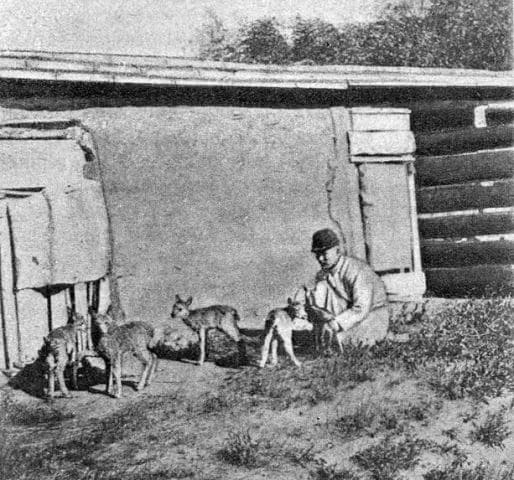
Meanwhile, this hunt is carried out quite simply. The hunters, divided into two chains, carefully approach the found animal: the first consists of the best shooters and cold-blooded people. Of course, it is difficult to take an adult tiger alive and it is killed, but its kittens are always taken alive; at home they are surrounded with the most vigilant attention, raised in good health and peace until their teeth are completely replaced, and only then are they sold, as having become completely accustomed to captivity.
The period of tooth replacement in tiger cubs is considered critical: they often die at this time. If a particularly strong and ferocious tiger is tracked down, the Kirghiz method is used to kill it: a small, movable lattice yurt is built, light but strong, without doors.
Four or three hunters climb into it and thus go after the tiger, moving the yurt with them. The ferocious animal, seeing these people, as if imprisoned in a light cage, bravely rushes at the yurt, and the hunters, without missing a second, shoot it point-blank or strike it in the heart with a knife - both freely done under the reliable protection of the lattice.
Nezhivov catches snow leopards alive - although not cunningly, but in a unique way. In the area frequented by these animals, a deep hole is dug - up to one and a half fathoms - sharply narrowing at the top; the hole in the pit is camouflaged with branches, grass and moss, and a dead sheep or goat is hung on a tree branch above it.
The bloodthirsty predator, having smelled the food, rushes towards it, of course, immediately falls through and ends up in a leather purse-shaped bag stretched out in the pit... The weight of the leopard tightens the "purse", and it is no longer possible for the poor animal to get out!
The hunters take the bag out of the pit, but since the leopard does not remain inactive in it, but makes every effort to bite and scratch people even through a strong bag, the captured animal is deftly and quickly swaddled over the bag like a mummy, and in this “neutralized” form is tied to the saddle and carried, in this uncomfortable position for it, often 50 - 100 miles.
Lynxes, wolves and many other animals are caught in almost the same way; of course, they also use special traps, such as nets, etc. The Nezhiv hunters pursue rams, goats, saigas, yaks, Przewalski's horses and many other herbivores on horseback until they are completely tired.
Adult animals are lassoed or driven into pre-prepared pens, while the young ones usually cannot withstand this race for long, but try to quickly hide in the bushes or grass, from where they are taken Nezhivov catches kulans with greater pleasure than adults.
True, they have to be fed and nursed for a long time, but an animal raised in captivity better tolerates further life in zoological gardens and menageries. Large birds, both predatory and water, marsh and others, are also caught as chicks and then reared in cages and special enclosures.
However, griffons, vultures and eiders are also caught as adults. For this purpose, carrion is thrown in abundance somewhere in the steppe, and nets are set up around it, on the sides in different directions. The predators flock and eat to such an extent that they are unable to rise into the air.
The catchers take advantage of their helpless position, drive them into nets, entangle them in them and easily take possession of the gluttons. That the Russian peasant Nezhivov managed to organize, more or less fundamentally, the first fur trapping establishment in Russia on his own initiative is, of course, very surprising; but even more surprising is that he founded another business, also unprecedented in our country, which is only just beginning abroad; this business is fur farming.
In Nezhivov's menagerie on Naryn, red wolves, sables, lynxes, foxes, even leopards breed and multiply superbly! There is nothing to say about herbivores - their breeding does not present great difficulties. Professor Tuessart in France, and A. V. Markgraf here - have already repeatedly demonstrated the need to set up fur farms; both of them even wrote excellent manuals on this issue.
And so a simple Perm peasant, long before their enlightened advice, independently founded this complex, subtle business, which gives almost infallibly successful results! It is not easy to catch a wild animal alive, it is even more difficult to raise it from a cub in captivity, it is very difficult to breed it as a domestic animal!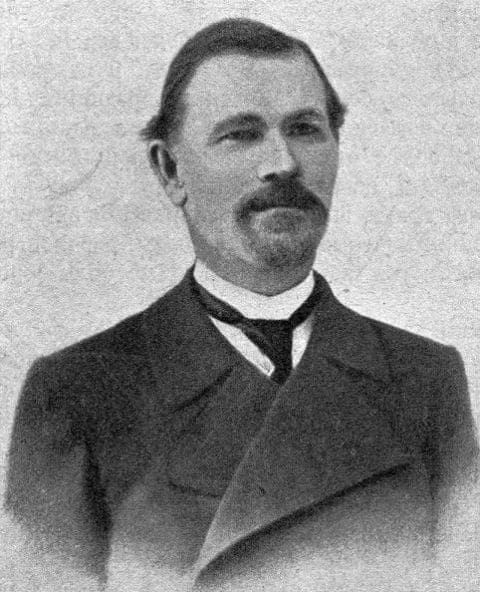
But what labor, what efforts must be made, how much fear must be experienced, how much attention and trouble must be spent in order to transport all these expensive wild animals, caught or raised at home, from the remote depths of Asia to the cultural centers of Europe!
All animals and birds subject to shipment to Europe are placed in special boxes-cages, roughly but firmly assembled. These cages are placed on Kirghiz carts; boxes with horns, skeletons, stuffed animals, egg collections and other zoological material are loaded onto other carts.
Such a caravan of several carts (arbas) from Naryn goes through endless steppes, rolls over many mountain passes - at an altitude of up to 3500 meters - some with eternal snow and glaciers; have to endure both heat and snowstorms. For example, the transport crosses the mountains of Nura, Terskey-Alatau, then goes to Tokmak, Aulie-Ata, Khamkent (Chimkent).
The "nearest" railway line - in Tashkent - is a thousand miles away!.. This journey takes from 24 to 28 days. From Tashkent, the animals travel by rail to Perovsk, Kazalinsk, Orenburg, Samara, Tula, Smolensk, Brest, Warsaw, Kalisz and Germany.
This journey takes another twenty days! If to Tashkent the transports of Nezhivov's animals are accompanied by many people under the command of the trapper himself, then from this city to the very destination abroad - Nezhivov carries them all alone!
By rail, the entire journey for 20 days, he takes care of his captives, feeds, waters, cleans, treats them. And there are more than two hundred captives in each transport! Of course, despite the most vigilant care, not all the animals arrive at the departure point: many die on the way!
The prices at which Nezhivov sells his "live goods" are very interesting. The highest price, of course, is for the rarest animal - the tiger; it goes for between 1,500 and 2,000 rubles. Over the course of his many years of activity, Nezhivov has sold no more than a dozen tigers. The following prices are for snow leopards - from 300 to 500 rubles.
However, there are many other animals at the same prices: for example, sables, silver foxes, marals (deer), argali (mountain sheep), mountain goats, antelopes (saiga), Przewalski's horses, white yaks; lynxes, red wolves, kulans, black yaks are sold from 100 to 200 rubles; from 50 to 100 rubles - bears, sables (the worst grade), Tien Shan goats (roe deer), bearded eagles; for up to 50 rubles you can buy black marmots, otters, marsh cats, antelopes (jirans), pelicans, gray vultures; from 25 to 30 rubles - martens, gray wolves, red foxes, forest and rock cats, porcupines, badgers, black vultures, rock eagles, black storks, bustards, beautiful cranes, mountain turkeys (snowcocks).
Prices for skeletons and stuffed animals are already significantly lower: skeletons of marals - 200-250 rubles, snow leopards, lynxes, argali, goats - 50-100 rubles, stuffed argali and goats - 20-50 rubles, eagles and vultures - 10-20 rubles, and so on. Insects from a kopeck to 3 rubles a piece, shells from a kopeck to fifty kopecks.
It is curious that the prices given here apply only to amateur buyers and merchants; for scientific museums, universities and educational institutions in general, Nezhivov turns from an industrialist into almost a patron of the arts and is content with only compensating those expenses that he actually incurred in obtaining and delivering certain animals.
Nezhivov sends no more than two transports a year, each for 10-15,000 rubles. In Russia, Nezhivov is not known at all, and it is no wonder: the sale of his animals here is carried out on a microscopic scale! But abroad, his name is known to many scientific institutions in Germany, England, France; almost all the best zoological gardens and museums in Europe know him: after all, he is almost the only one who supplies wild animals of the Turkestan region to all of Europe and even a small part of America!
Not very well versed in Russian literacy, O. E. Nezhivov does not know a single foreign language, however, accompanying his transports personally, he conducts his business abroad personally, of course, using local translators. To America, France, England, Italy and Austria-Hungary, he delivers 1/10 of all exported goods for each country; the remaining 5/10 go entirely to Germany, and especially to Breslau, because the Breslau Zoological Garden resells the “goods” not only to other cities in Germany, but also to other European countries.
Every visit by Nezhivov abroad is a small holiday for the local zoology enthusiasts, because our Perm resident almost always brings something especially interesting and has already enriched many scientific museums and zoological gardens with rare animal specimens.
He is eagerly interviewed by correspondents of natural science publications, special magazines publish his portraits and biographies, calling him either “the Siberian tiger”, or “the Russian Hagenbeck”... Alas! Nezhivov is not always satisfied with some learned men: he brought rare birds to one German professor.
The professor was delighted and declared that the species of birds had not yet been noted by science; he immediately noted it and called the birds... by their names!.. The large four-legged creature, which still bears the name of a certain traveler, as it turns out, was first presented to this traveler by Nezhivov himself.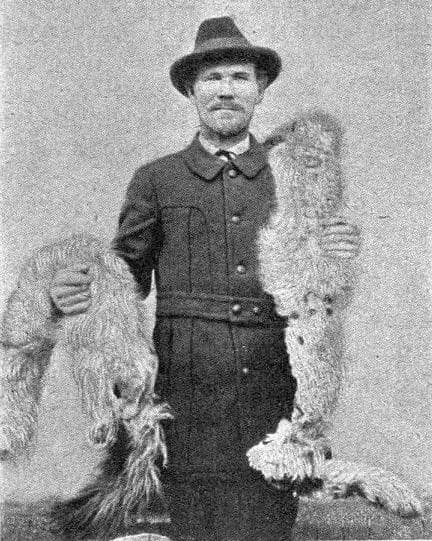
At his home in Naryn, Nezhivov set up something like a museum, where he collected almost all the representatives of the local fauna - in the form of stuffed animals, skeletons, alcohol-preserved preparations, etc. All interested persons are freely admitted to this museum, and the owner himself willingly gives the necessary explanations.
The exceptional life of O. E. Nezhivov, filled with dangerous adventures, is truly interesting and significant, and a description of it could take up a considerable book. O. E. Nezhivov with animal skins. But he himself is so modest that he does not like to talk about himself.
This man has studied the vast region of Semirechye like his own apartment; but he also knows the distant lands bordering on it... Goat paths, animal trails, gloomy lairs of terrible predators, all the remote slums - everything is known and familiar to him.
He climbed inaccessible cliffs, descended into bottomless crevices, and how many times he was exposed to various dangers! You can't joke with tigers or leopards; enraged boars (male wild boars) also often threatened Nezhivov if not with death, then with terrible injuries; he sat out whole days on a tree in the wilderness of the forest, surrounded by a hungry pack of red wolves.
Often he completely considered himself lost in the mountains, under snow drifts, or - sucked in by swampy quagmires. But resourcefulness and clear judgment always prevailed and brought him out of seemingly inevitable troubles! As a deeply religious person, Nezhivov sees God's special mercy towards him in all his successes. In any case, O. E. Nezhivov is interesting as a nugget, as a pure type of Russian person, not reshaped by an education alien to him, but quite originally and consciously found for himself an original activity, undoubtedly of no small importance for cultural humanity!
Without any outside support, without government subsidies, he founded a fairly solid business, which he lives and feeds on, receiving tens of thousands of rubles almost exclusively in foreign gold! After all, it is still very pleasant to note such types! We have Ermak, Dezhnev, Ashinov and other strong people seeking new horizons and deeds. Are not the Nezhivovs from their company?
Authority and photographs by:
Vdazimir K. Anfilov. "Russian Hagenbeck". Historical Bulletin, 1911. № 12.
https://rus-turk.livejournal.com/721996.html





